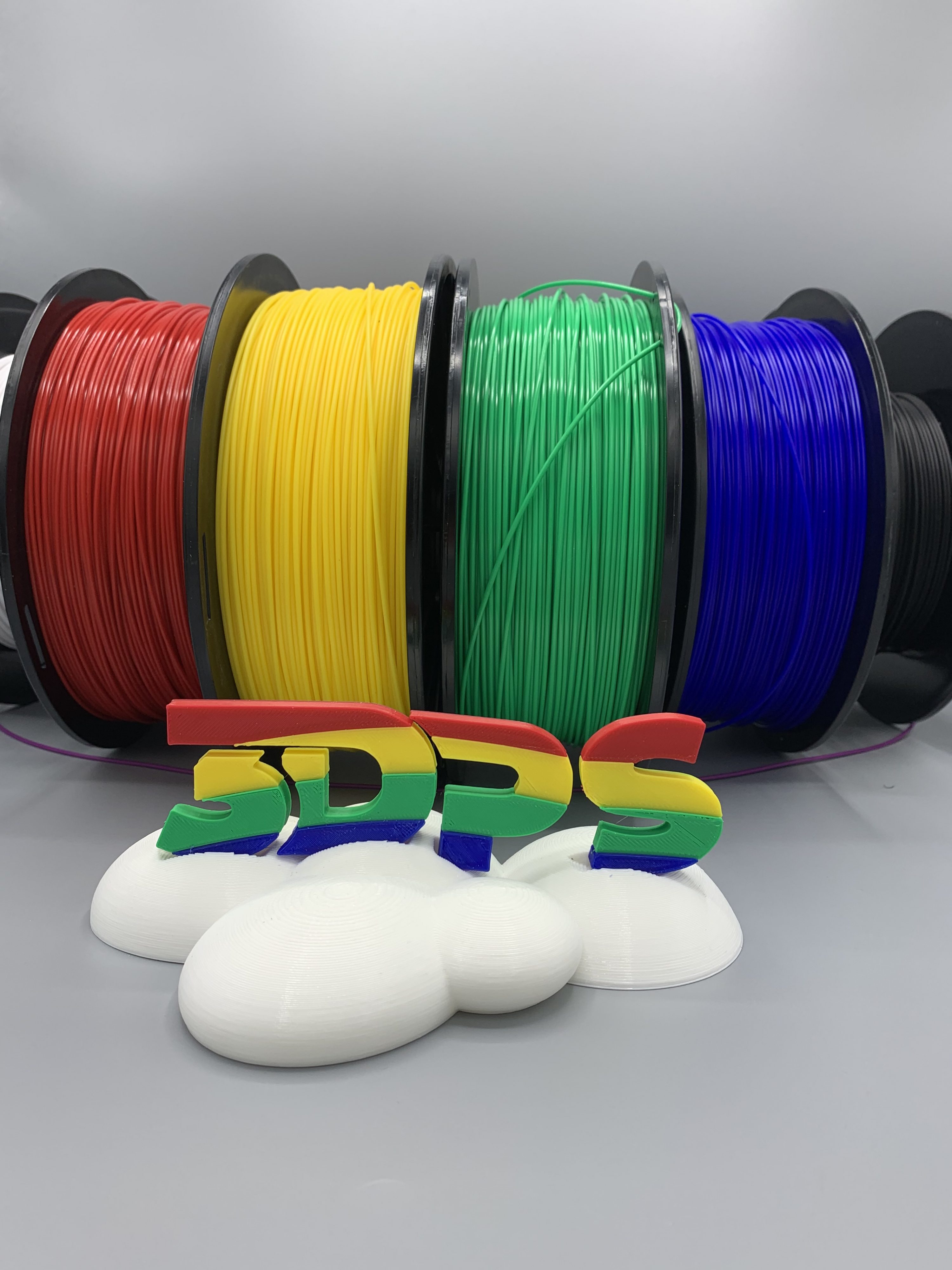“Filament” is a commonplace word in the 3D printing community. But, if you’ve never heard the word, what would you think it is? Filament could be described as any material in a wire-like form. If you reference a dictionary, it is defined as a slender threadlike object or fiber– especially one found in animal or plant structures. It is also defined as a conducting wire or thread with a high melting point that forms part of an electric bulb or vacuum tube– heated or made incandescent by an electric current. While these are common definitions, they do not describe filament as we use it in 3D printing. The filament that we talk about in 3D printing is made from a variety of different source materials. Currently, the most common filament is PLA (polylactic acid) which is derived from corn or sugarcane lactose based polymer. The other most common filament is ABS (acrylonitrile butadiene styrene) which is derived from a petrochemical stream. These materials both print on 3D printers and are used most commonly. Today, there are more versions of these materials from manufacturers than can be listed here. Formulations have changed– they have been combined with other materials. They are refined and reformatted to become composite materials that are both the same and different than the primary constituent material.
All filaments are not created equally. Many manufacturers do not produce filament to the same standards. Low quality filaments can have minor to devastating effects on your prints and printer. Having a high tolerance diameter through the entire length of the spool is crucial to printing successfully. Fluctuations in diameter can lead to uneven prints, under extrusion, clogged nozzles, and more. Even if filament is manufactured to a consistent diameter, it must be wound, packaged, and stored correctly. If it is wound incorrectly, it can get cross linked and prevent filament from unwinding off of the spool. This leads to print failure. Many of these materials are hydroscopic (water absorbing)– meaning that they must be stored in a dry environment with silica for moisture absorption or they can become very brittle and difficult or impossible to print with.
Nothing is more important than quality filament if you are relying on it for prints for customers. These were hard lessons to learn as a new business. When we started 8 years ago, supplies of filament were scarce and expensive. At that time 3D filament was somewhat novel and could only be ordered from a couple of online outlets. The first spools of filament that we received reminded us of large spools of weed whacker material. Often when people ask us what the material was, that is how we described it. Of course, we quickly learned that it required attention to keep it wound and stored carefully.
Filaments are made in two diameters. There are printers that only print with one or the other diameter. Some ponder this as a mystery of the 3D universe. However, there are some differences that true 3D nerds discuss. According to some print enthusiasts, 1.75mm prints result in higher detailed prints on multiple sized printers. This is in contrast with 2.85mm (sometimes labeled or marketed as 3mm) that doesn’t print details as well but prints faster. This is a lively discussion in some 3D groups. However, if you have a printer that prints with one size, that is probably what you stick with that simplifies your filament choices.
What is important about filament is its printability– from the beginning of the spool until the end.
If we could distill the many important lessons we have learned throughout years of experience down to a few points, they would be the following:
- Buy good filament. This will save you money in the long run by having a higher success rate and remove the headache of trying to untangle bad material, bake out moisture, or clean out extruder assemblies.
- Ensure that the material is packaged and stored correctly at your location. This means making sure to not let the spool unwind by pinning the end of the filament to the reel– either through a hole provided on most reels or by taping it to the side.
- Prevent moisture from prematurely ruining your reels once they are opened. This means putting them in an airtight container with desiccant. It will prolong the life of your supply– especially the more exotic materials that don’t get used as often.
- If you can see it, check the manufacturing date. No matter how much you try to prevent moisture from ruining the material, it will eventually still find its way in. If the material is very old, there is a high likelihood that you will have some issues with it for printing.
- If you can, grab some calipers and sample your supplier’s material every so often. Measure the diameter of the filament across different points on the reel in order to check and see what the fluctuation in the diameter is. If it is within +/- 0.05mm of the labeled diameter, chances are that you are okay. If it’s anything outside of that, consider reaching out to your supplier or switching materials.
- Before trying any new supplier or filament type, run some small prints to nail down the print settings and verify the quality of the material before starting any significant, lengthy prints.
The few extra dollars that you spend up front for good filament will be worth the money you will save from having successful prints more reliably.
As always, The 3D Printing Store team is available to provide demonstrations, professional development courses, and educational courses to you and your team. Please contact arausch@the3dprintingstore.com for inquiries.



